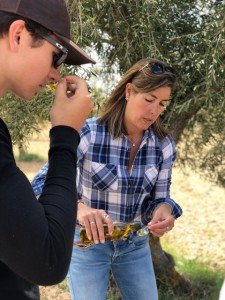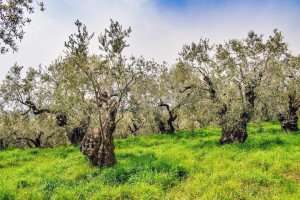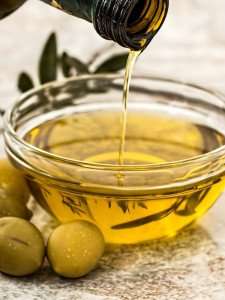Costa Rica's Favorite Meal: The Casado
February 7, 2025
Costa Rica is a fabulous destination for luxury travelers, as well as seniors, couples, and families, not least because of its many excellent dining options.…
Read This Post Unless you go straight to the source to buy your olive oil — which you can do on many of our culinary vacations, including Culinary Adventure in Puglia — there are some important things to keep in mind when scouring the stores.
Unless you go straight to the source to buy your olive oil — which you can do on many of our culinary vacations, including Culinary Adventure in Puglia — there are some important things to keep in mind when scouring the stores.
Like wine, there are a variety of olive oils to choose from, but no matter what, extra virgin olive oil is typically always the best option. Not only does it have the least taste defects, especially if it is cold pressed, it is also the healthiest. But if you’re not in a cooking class working with the olive oil, how do you choose?
 Find out how olive oil is made.
Find out how olive oil is made.
Tasting is, by far, the best way to determine the quality of an olive oil. Start by giving it a sniff; if it smells nutty, sweet, grassy, or oily, then it’s off to good start. The color is less important as olive oils can be different shades based on when the olives were harvested; a green olive oil, typically with a more potent flavor, is harvested early in the season (either Winter or Spring), versus a golden olive oil, which is much more mild and harvested in the Fall.
Then there’s the taste. The stronger the flavor, the better the olive oil is with red meats, like steak. With milder, or more delicate, flavors consider using the oil on salads or as a garnish on fish. Of course, if it smells like varnish or vinegar, it has gone bad.
 Harvest olives on our farm to beach getaway in Greece.
Harvest olives on our farm to beach getaway in Greece.
Of course, there’s other important things to consider before purchasing the olive oil and bringing it into your kitchen. If an oil is exposed to heat and/or light, the quality can been affected; in other words, never buy olive oil that is stored in transparent glass or plastic bottles.
Also pay attention to the date stamp, which is either a harvest date or use-by date. Olive oils are typically best used within one year of the olives being harvested, especially if it’s unfiltered.
 The best indication though of a good olive oil, whether it comes from Italy, Spain, or beyond, is the taste and if you like it. So try and try some more. And once you buy that olive oil? Make sure to keep it in a dark, cool place so it stays fresh.
The best indication though of a good olive oil, whether it comes from Italy, Spain, or beyond, is the taste and if you like it. So try and try some more. And once you buy that olive oil? Make sure to keep it in a dark, cool place so it stays fresh.
You can learn even more about olive oil by going to the source. Learn about the rich qualities of olive oil at Cooking in Andalusian Olive Country. During this Spanish cooking vacation, you can tour an award-winning olive mill with an official olive oil taster for the DO Priego de Cordoba as your guide. You can also visit an olive grove and mill during our Capital Culinary Adventure in Madrid.
 Back in Italy, The International Kitchen also offers a Tuscan cooking vacation with weeks in the fall dedicated to the “green gold” of Tuscany. The late fall months are perfect for harvesting olives and learning about the flavors and fragrances of extra virgin olive oil, which you will discover in a Tuscany cooking class.
Back in Italy, The International Kitchen also offers a Tuscan cooking vacation with weeks in the fall dedicated to the “green gold” of Tuscany. The late fall months are perfect for harvesting olives and learning about the flavors and fragrances of extra virgin olive oil, which you will discover in a Tuscany cooking class.
By Peg. Kern
Find more photos, videos, food facts, and travel stories from The International Kitchen on Facebook, Instagram, and YouTube.
Sign up to receive our newsletter, which includes travel tips, recipes, promotions, and information on our best cooking vacations.